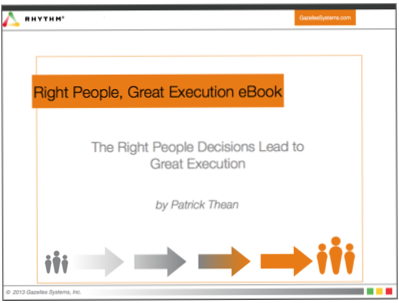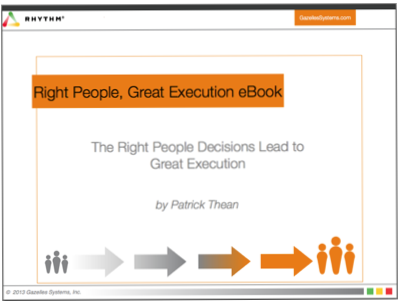During times of organizational flux, it can become increasingly difficult to engage your employees in learning. Across the country and in a cross-section of industries, training budgets have become tighter than ever. In the midst of these challenges, training employees has become more critical, both to keep the company moving forward and to retain high potential employees.
Recently, in conversation with a CEO, he revealed his desire to help all of his team members grow in business acumen. The idea was to have the team read books and, essentially, make book reports to the rest of the team. The results were less than exhilarating. There was great resistance to personal accountability for learning.
So, with a chiseled-down budget, overworked team and waning morale, what can you do to engage your team in the development that they need? Here are some broadly practical takeaways for developing yourself and your team:
1. Focus. Continuously emphasize the most critical concepts. Re-introduce concepts using multiple media and engaging as many senses as possible. Use the concepts in day-to-day language and conversation, not just in the official meeting.
2. Visual. Create visual keys for abstract concepts. Many of today’s learners are visual learners. A picture is worth a thousand words, a simple diagram is worth 10,000 words, and a well-constructed dashboard is invaluable.
3. Activity. Utilize in-meeting activities to reinforce newly presented material. After a new concept or subject has been presented via text reading, lecture, or discussion, ask team members to put the concept into action by brainstorming application to your business as aligned to your annual and quarterly plan.
4. Connection. Create links between concepts and information. These overlaps build on information that has already been learned and helps learners acquire the new knowledge at the same time.
Each of these takeaways can help motivate even lethargic employees. Set the scene with an expectation of high performance and mutual respect, along with the takeaways above, to keep your team members performing at a higher level and growing their career, even in the face of challenging constraints.
Here are four action steps to get your team started:
1. The challenge. Identify one or two current learning challenges for your team. This might include how team member decisions affect EBITDA or profit margins; research on social media opportunities; strengthening sales (or closing) skills; aligning marketing material with products, sales, and service; etc.
2. Just the facts. What are the main concepts or points that you need to convey? At the most elementary level, this should include MCS (Main facts-Core concepts-Simplified description).
3. Visual keys. Do you have visual keys to simplify understanding of the main concepts? When considering a skill-building program, please review your materials to ensure you have embedded visible keys for knowledge of the core concepts. If you are considering a general organizational initiative, can you create a visual key for all in-house communications or on t-shirts or banners?
4. Dashboard. Measure the expected outcomes. You can’t just hope your team sgets more brilliant by accident or take personal accountability without knowing for what, why, or how. Additionally, my client experience indicates excellent success with setting realistic expectations. That is not overreaching as your starting point. Of course, you could expect your team to read a book every week, but to expect that level of discipline the first week you determine this goal and begin to measure is a sure path to disappointment.
Now, let’s add the practiapplicationsioat our clients secluded, considering that you may try the above takeaways and the listed steps with no beneficial effect on (some) team members. This does happen and must be considered. First, let me say that you’ll have less and less of this challenge as you hire more and more “A-players." For more information on A-players, read this Forbes article "The Importance Of Hiring 'A-Players" by Vick Vaishnavi.
The chance of a “C” player growing up to the “A” roster is slimli,m is lowcan happen. You’ll never know unless you take the above steps to challenge team members to raise the bar on learning and their production. If team members don’t (or are unable to) step up, map out where else you might use their talents and contributions. And finally, map out their path to get there – or, in the worst case, your path to call them "out of there." These are practical and proven approaches used in fast-growing companies. My question is, “what language or approach are you using to have these types of honest conversations?” Please post comments below so we may all learn from your experience.



